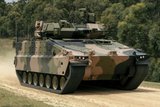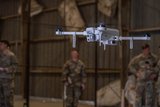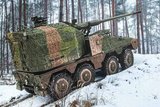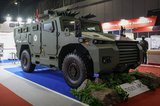Lockheed Martin awarded MAPS contracts
Lockheed Martin is to continue development of an open-architecture controller for the US Army’s Modular Active Protection System (MAPS) programme under two contracts from the Tank Automotive Research, Development and Engineering Center (TARDEC).
The controller is being designed to process multiple sensor and self-defence systems in use on a vehicle, enabling autonomous or semi-autonomous detection and defeat of a variety of inbound threats.
Several prototypes have already been delivered to TARDEC by Lockheed Martin for evaluation under a previous contract.
The company will now continue software development for a rapid counter-measure capability that protects vehicles against incoming threats under the MAPS Demonstrator Controller Software – Phase 2 contract; and will develop a controller compliant with MAPS architecture and safety requirements under the MAPS Controller Hardware contract.
Paul Lemmo, vice president of Fire Control/SOF CLSS, Lockheed Martin Missiles and Fire Control, said: ‘We are developing a controller that enables the US Army to implement active protection systems that are free of the restrictions imposed by proprietary technologies.
‘Not only does the controller provide ample processing power, but its open-architecture design allows the army to interchange sensors and self-defence systems as technology advances or new threats emerge.’
More from Land Warfare
-
![“A new philosophy of defence”: ASELSAN sets out ambitions for the future]()
“A new philosophy of defence”: ASELSAN sets out ambitions for the future
In Conversation: Shephard’s Gerrard Cowan talks to ASELSAN CEO and President Ahmet Akyol about how the business has evolved and expanded over the past five decades, and its aim of becoming a top 30 global defence company by 2030.
-
![Still no clarity on the future of the British Army’s new wheeled artillery system]()
Still no clarity on the future of the British Army’s new wheeled artillery system
The UK donated its AS90 155mm/39cal tracked self-propelled howitzers to Ukraine ahead of planned retirement and bought Archer platforms to fill the gap. Eventually RCH 155s were ordered but the procurement effort remains under a cloud.
-
![More details of Indonesia’s Celeris-based 4x4 emerge as customer hunt begins]()
More details of Indonesia’s Celeris-based 4x4 emerge as customer hunt begins
The Texelis Celeris builds on the rolling chassis of the Serval 4×4 lightweight multi-role armoured vehicle which is being built by Texelis and Krauss-Maffei Wegmann Nexter Defence Systems (KNDS France).
-
![KF41 Lynx finds a path but hurdles remain]()
KF41 Lynx finds a path but hurdles remain
The Lynx is typically configured as an IFV operated by a crew of three and with space for up to eight dismounts in the rear troop compartment. The platform is being delivered to Hungary, has been contracted for Italy and will soon be in Ukrainian hands in small numbers.






















